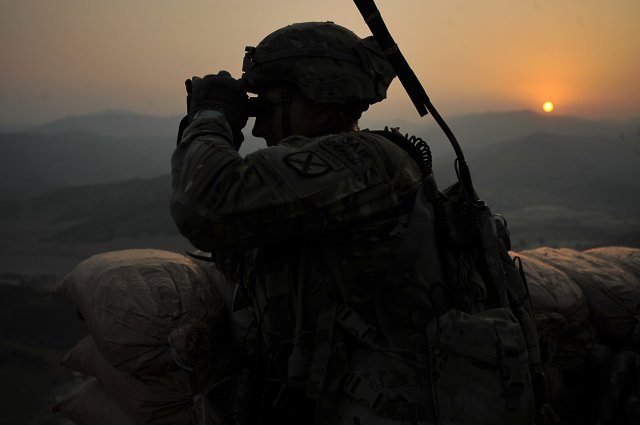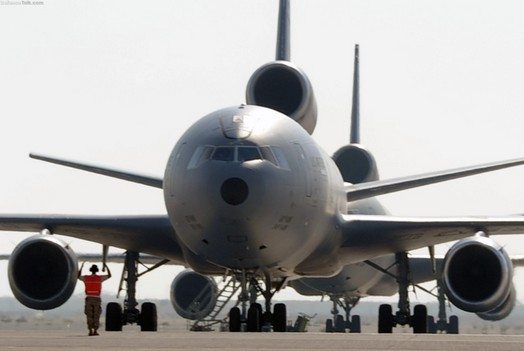After putting the tactical communications network “under pressure” in a realistic operational environment in order to quickly deliver a “digital guardian angel” to troops in Afghanistan, Army leaders said the Network Integration Evaluation process is adapting to drive continued innovation.
The network remains a critical modernization priority in today’s uncertain budget and national security climate, senior leaders said this week, during the 2013 Association of the United States Army Annual Meeting and Exposition. With Capability Set 13, or CS 13, now supporting long-range, on-the-move communications for two brigade combat teams of the 10th Mountain Division during their advise-and-assist operations, the Army is focused on improving future capability sets by promoting competition among vendors and simplifying the network for the user.
“As the Army gets smaller, the network is an enabler to that smaller force — it makes it more lethal, it gives it a greater reach,” said Col. Mark Elliott, director of the Army’s G-3/5/7 LandWarNet-Mission Command Directorate. “You do get more bang for your buck for what the network brings to the Warfighter — we just have to continue to do it better.”
Leveraging lessons-learned from the 10th Mountain Division (Light Infantry) and the semi-annual Network Integration Evaluations, known as NIEs, the Army is working to enhance training and make systems more user-friendly as additional brigade combat teams are fielded with advanced network capabilities. Aside from the operational benefits, simplifying the network will lead to cost savings by combining hardware and other infrastructure, reducing software development efforts and decreasing the number of field service representatives required to train Soldiers and troubleshoot systems.
“This network allows the commander to stay in the situation, to stay connected, at all times — that’s what the power of the network is,” said Brig. Gen. Dan Hughes, program executive officer for Command, Control and Communications-Tactical, or PEO C3T. “But we have to make these systems much easier to use, train and maintain.”
As the Army transitions from fighting two wars to preparing for future threats, the NIE will provide the operational “laboratory” to incrementally enhance the network, respond to the emerging needs of regionally aligned forces and assess dynamic “leap-ahead” technologies, leaders said. While the events are adapting due to budget constraints — including greater use of modeling and simulation — the Army remains committed to the forum and the construct.
“Continued evaluation of new capabilities for the future is essential — how can we afford not to do it?” said Lt. Gen Keith Walker, director of the Army Capabilities Integration Center. “The NIE gives us a practical, hands-on environment to develop programs in real time with Soldier feedback.”
Over the course of the five NIEs conducted to date, such user feedback not only shaped the technology and doctrine for CS 13, but also influenced the Army’s acquisition strategy on several key programs, including tactical radios, said Heidi Shyu, assistant secretary of the Army for Acquisition, Logistics and Technology.
“The NIE has informed us that we have more vendors out there that can come into competitive environments and produce the innovation we need,” Hughes said.
While the Army has procured commercial routers, antennas, switches and other items as part of the NIE, the service is also implementing changes to improve the process for industry partners. Capability gaps will be identified farther in advance and “locked” in place to be evaluated over two NIE cycles, increasing industry’s lead time in developing mature capability solutions. Having fewer, more defined gaps will also allow the Army to better align NIE results with budget planning to inform procurement and fielding decisions for future capability sets, Elliott said.
NIE 14.1, the sixth event in the series, begins next week and continues through November. By mixing live and simulated operations, NIE 14.1 will reduce cost and demonstrate innovative training techniques and capabilities. Next spring, NIE 14.2 will be the first such event to include joint and multi-national participation. NIE 15.1, in fall 2014, will be used to assess the integrated network baseline to evaluate the performance of existing network capabilities and identify remaining gaps for industry to target.
“[The NIE] is not a one-year, two-year or three-year journey,” said Lt. Gen. James Barclay III, deputy chief of staff, Army G-8. “This is a long-term journey to help us decide where we want to go, what we need to buy, or what we need to improve.”
(Editor note: Nancy Jones-Bonbrest contributed to this report.)











